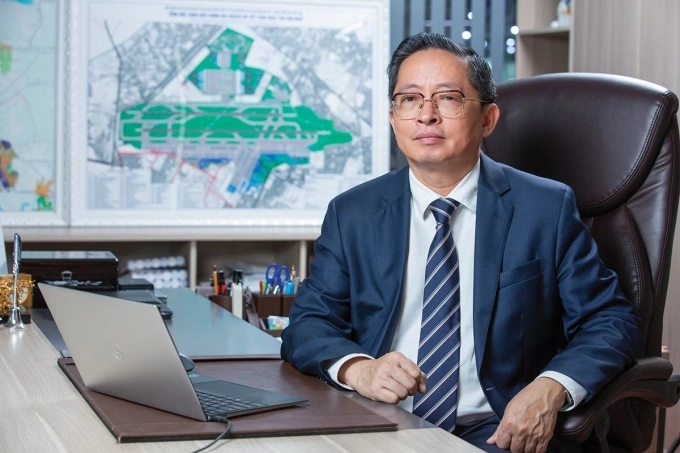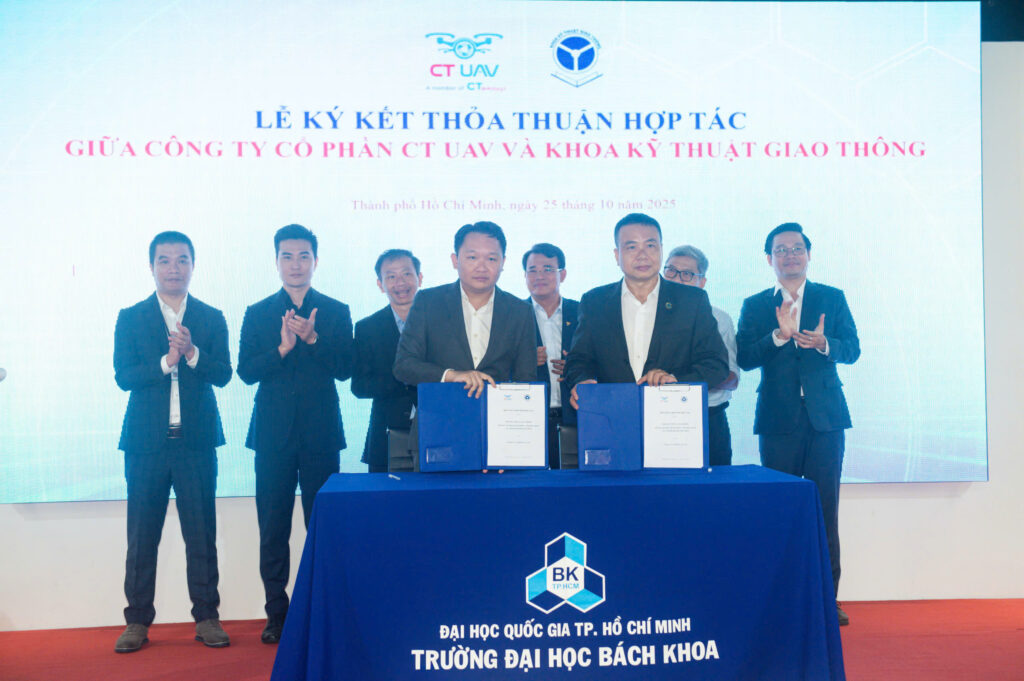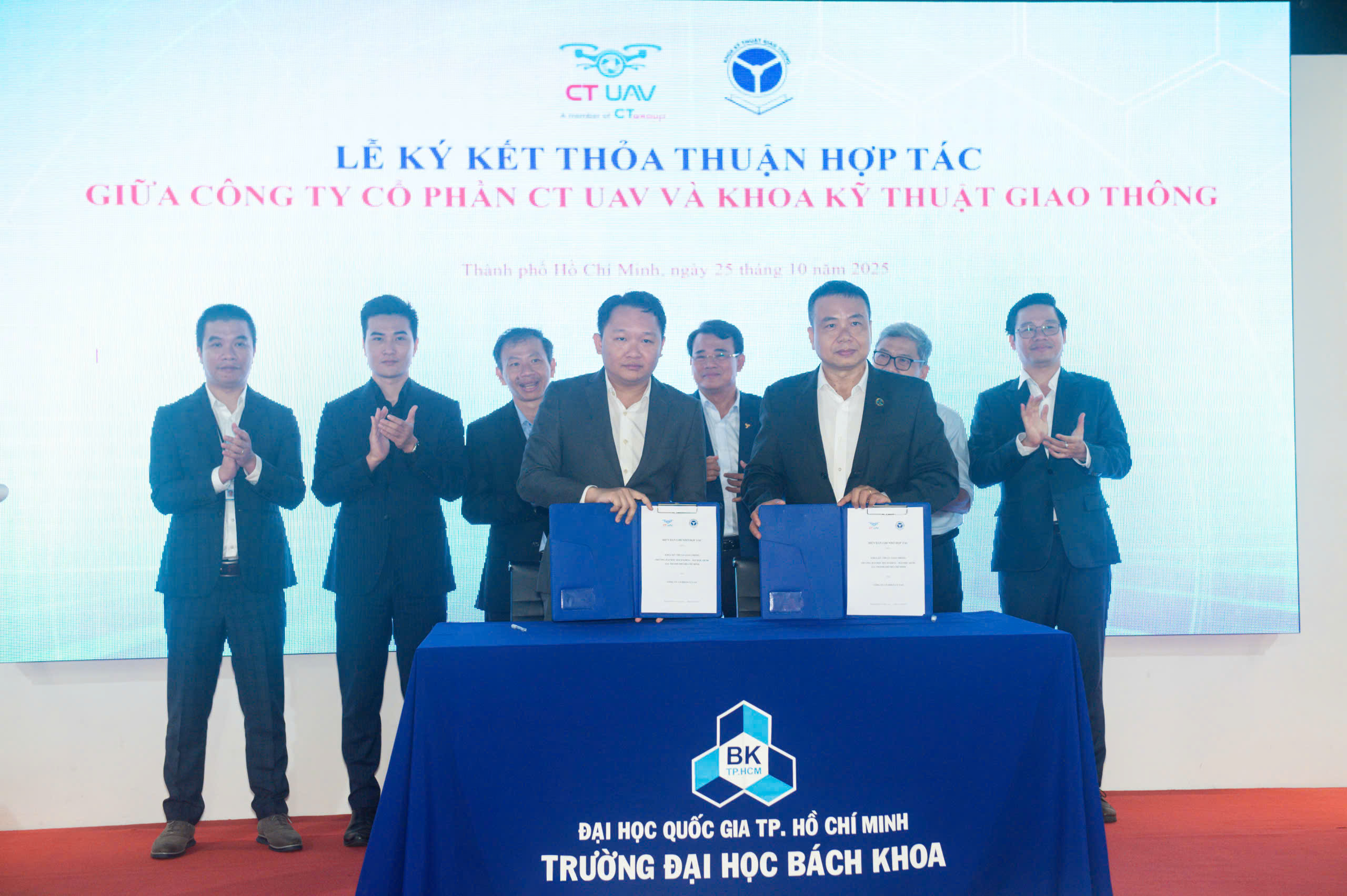As one of Vietnam’s leading technology and innovation corporations, CT Group has long pursued a strategy of self-reliance and mastery of the world’s most advanced technologies in high-tech industries such as semiconductors, artificial intelligence (AI), unmanned aerial vehicles (UAVs), and carbon credit trading platforms. CT Group believes that Resolution No. 57-NQ/TW, along with a new wave of strategic policies, will “activate breakthrough growth” for domestic technology enterprises. We spoke with Mr. Tran Kim Chung, Chairman of CT Group, to discuss the opportunities and outlook brought about by this landmark Resolution.

Reporter: In the context of the Fourth Industrial Revolution, for the first time, under the signature of General Secretary Tô Lâm, Resolution 57 elevates science, technology, innovation, and digital transformation to the position of “top national breakthroughs.” Shortly thereafter, CT Group became the first enterprise in the country to establish Task Force 57. Could you share how the Group identified investment and development opportunities by swiftly putting this unit into operation?
Mr. Tran Kim Chung: Resolution 57 was issued at a decisive turning point, a “make-or-break” moment in the Fourth Industrial Revolution. It came at precisely the right time, addressing core issues by clearly defining Vietnam’s strategic advantages in technology development. The proposed solutions are both bold and coherent, grounded in a lucid understanding of current realities, supported by the power of data-driven insights. 80 years after the Declaration of Independence in 1945, I would say this is another “Declaration of Independence”, one for science and technology. In the 4.0 era, true independence is impossible without technological sovereignty.
What is especially remarkable this time is the organizational structure: the General Secretary himself chairs the Central Steering Committee for Resolution 57, demonstrating the highest level of political will. This sends a powerful message of confidence to the industrial and business communities – a signal that inspires trust and excitement across the market.
From a business perspective, we see Resolution 57 as a broad, open highway – one that propels the nation, enterprises, and the young generation forward. With 70 million young people, Vietnam possesses a tremendous source of human capital. This Resolution effectively “unlocks and amplifies” that potential many times over.
At CT Group, our Task Force 57 serves as a proactive, exemplary model – acting as a bridge between national strategy and enterprise execution, aligning closely with government agencies, harnessing state and community support, and functioning as an accelerator to drive rapid growth in Vietnam’s core technology sectors.
Reporter: Could you briefly introduce Task Force 57 and explain how it operates?
Mr. Tran Kim Chung: I strongly support Resolution 57, so I promptly established Task Force 57 and personally took on the role of Head of the Task Force to ensure the highest level of focus for this program. The greatest challenge is ensuring that Task Force 57 does not duplicate the executive functions of the management boards of our member companies, but instead truly acts as an “accelerator engine”, taking on initiatives that management teams may not have envisioned or reached yet.
First, the Connectivity Committee, responsible for linking with other Task Force 57 units, including the Central Task Force 57, to ensure timely synchronization of strategies, information, and plans – creating a synergistic force across the system.
Second, the Legal Committee, which continuously anticipates potential legal issues during implementation and proactively develops solutions before obstacles arise. Particularly, for sustainable development in innovation, science, and technology, intellectual property must be given top priority. Investment in IP is a long-term strategic investment. With a target of achieving 100 patents and 300 innovations or industrial designs in 2025, we are building a highly specialized global IP team capable of operating at international standards.
Third, the Finance Committee, tasked with channeling and leveraging financial incentive policies under Resolution 57 to support member units.
Fourth, the Communication Committee, which drives public engagement through proactive initiatives – for example, Task Force 57 is currently organizing the “Youth and Resolution 57 Festival,” inviting one university each day and selecting outstanding, well-rounded students to participate.
Fifth, the Education-to-Business (E2B) Committee, which pioneers the commercialization of research outcomes, transforming educational and scientific achievements into practical market value, thereby fostering high-tech research and innovation in Vietnam.
Sixth, the Innovation Hub Alliance Committee, which connects and builds a network of innovation centers across Vietnam and globally.
Seventh, the Global Talent Support Committee, focused on implementing key aspects of Resolution 57 related to special mechanisms for attracting global talent to Vietnam, while creating a unique ecosystem that enables international experts to thrive and contribute locally.
Finally, the Ecosystem Synergy Committee, dedicated to developing optimal models that allow high-tech sectors to collaborate and cross-pollinate, thereby creating distinctive competitive advantages.
Reporter: One of the key directives in Resolution 57 identifies “scientists as a decisive factor” and emphasizes attracting, nurturing, and retaining top-tier experts and “chief engineers” from both inside and outside the country. How is CT Group approaching the task of attracting, developing, and retaining high-quality human resources?
Mr. Tran Kim Chung: To address the challenge of attracting talent, we are developing what we call the Talent Doctrine 4.0, a new framework that redefines the concept of “talent.” In our view, a true talent is someone capable of completely changing the destiny of an organization or even a nation. However, in the era of Industry 4.0, the definition of talent has evolved. No matter how brilliant one’s intellect may be, it still cannot surpass artificial intelligence. Therefore, the “talent of the 4.0 era” must be cyber, essentially a human–machine hybrid.
Vietnam is currently facing a serious brain drain, as many of our brightest minds choose to work abroad and do not return. To bring them back, salaries and housing alone are not enough. They need a stimulating intellectual environment – one that allows them to stay at the forefront of global research. Our R&D ecosystems and supply chains must be ready, so that returning scientists can accelerate immediately rather than waste time catching up. At CT Group, we are creating precisely that environment – an ecosystem where scientists can find what they need to realize their ideas. What truly matters is that our technologies must be ahead of global standards, so that top minds feel challenged and inspired, not left behind.
We are building an internationally competitive talent team. Our experts include professionals with over 30 years of experience in the semiconductor industry, as well as key figures from several countries who are leading major projects. In parallel, we are recruiting outstanding young talents directly from universities. To attract high-quality human resources, CT Group has launched special incentive programs for students with strong passion for innovation – such as the “Peace of Mind to Innovate” program, which offers a starting salary of 20 million VND per month for fresh graduates, plus a 10% bonus for those who demonstrate a strong commitment to creativity and innovation.
Reporter: One major challenge for technology enterprises is how to commercialize their research and products. CT Group has established an E2B (Education to Business) Committee, dedicated to this mission. Could you share how this committee operates to achieve effective outcomes?
Mr. Tran Kim Chung: A major gap in our ecosystem has been the waste of valuable research – with hundreds or even thousands of academic studies never commercialized. Much of this happens because research is often driven by intuition rather than market demand, leading to products with no viable market. To overcome this, we must conduct market-oriented research, accurately predicting future demand and trends. CT Group plays the role of defining “research assignments”, gathering real-world market problems to feed into the academic research process. The E2B Committee is responsible for solving this equation in reverse: it begins with market outcomes and then works backward to guide university research.
Our goal is for CT Group to become Southeast Asia’s leading UAV corporation by 2026. We aim to make UAVs the backbone of a new economic doctrine – the Low Altitude Economy (LAE). This doctrine will open up vast opportunities for explosive economic growth in the near future. The E2B Committee is guiding the commercialization of 50 global UAV research projects, laying the foundation for the LAE economy in Vietnam.
Our goal is for CT Group to become Southeast Asia’s leading UAV corporation by 2026. We aim to make UAVs the backbone of a new economic doctrine – the Low Altitude Economy (LAE). This doctrine will open up vast opportunities for explosive economic growth in the near future. The E2B Committee is guiding the commercialization of 50 global UAV research projects, laying the foundation for the LAE economy in Vietnam.
Reporter: Thank you very much for your insights.







